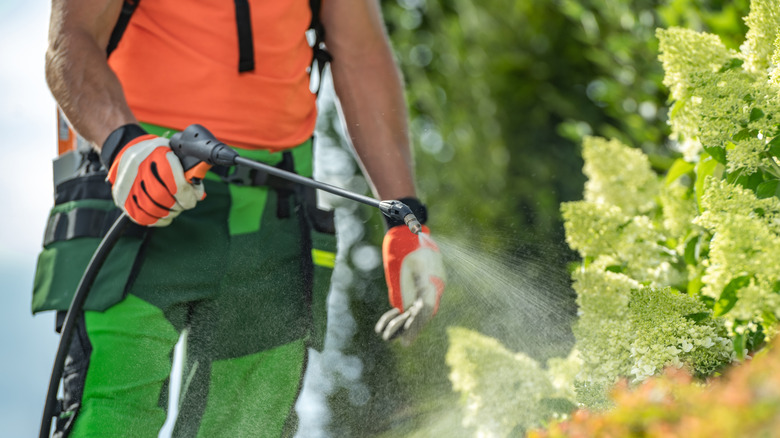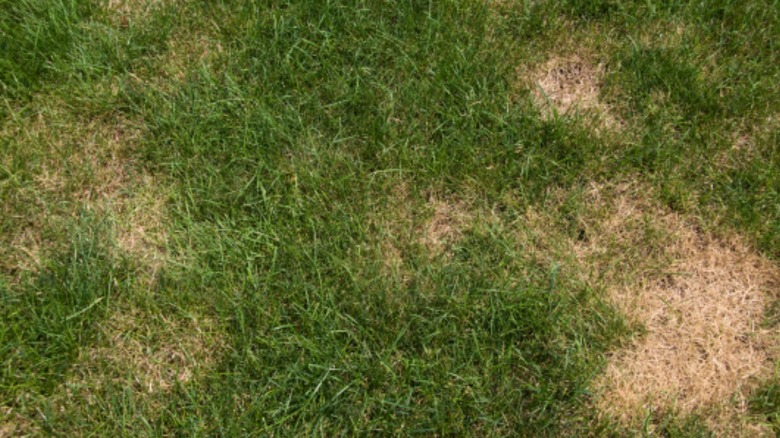How To Decide Which Fungicide Is Best For Your Lawn Care Needs
There are a lot of big mistakes you can make in lawn care, but failing to keep things funky, fresh, and fungus free doesn't have to be one of them. The trick is knowing which fungicide is right for the invaders in your lawn. So we asked lawn expert Ryan Farley, CEO of LawnStarter, to give us the inside scoop on all things fungicide.
First and foremost, Farley said the important thing to do is know what kind of fungus you're tackling. "Your best bet is usually to take a picture of what you're dealing with and look for similar photos online," he told House Digest in an exclusive interview. "While some diseases, like red thread, are easy to identify from their name alone, others, like summer patch, brown patch, and dollar spot, can look basically identical to the untrained eye."
Once you narrow down the type of fungus, you can go into a treatment plan. It's also important to know what you're battling because some funguses, like the fast-spreading pythium blight lawn disease, are known to kill lawns.
Choosing a fungicide category
As with other treatment solutions, fungicides don't come in a one-size-fits-all variety. Unless you plan on making your own lawn disease product out of common pantry ingredients, you'll need to determine which kind best serves your lawn's needs. To do that, you want to understand the pros and cons of each type. Lawn expert Ryan Farley, in an exclusive with House Digest, advised that the two general categories are contact and systemic fungicides. He noted that they interact with lawns differently.
"Contact fungicides are broadly effective against a wide variety of fungi, but they also tend to be rough on your lawn, other plants, pets, and children," he said. "Systemic fungicides are much more targeted; they kill specific fungi in specific ways. They're useful if you know exactly what you're dealing with, but they won't work on everything." That's why Farley suggests knowing what fungus invader you're conquering before starting a treatment plan.
Change your watering routine to avoid fungal infections
Once you apply a fungicide to destroy the infection, you want to change something in your lawn care to keep it from recurring. Ryan Farley suggests altering the watering routine to avoid further fungal issues. In an exclusive interview with House Digest, Farley said that fungicides are helpful for killing fungus, though they can't fully solve the problem if other changes aren't implemented.
"They're a good way to get rid of endemic, stubborn infections that won't go away with ordinary care like changing your watering routine," he said. However, Farley added that ongoing infections are less common issues. "Most fungal infections are temporary, and most are caused by too much water or improper drainage."
Farley advised that other ways to keep fungus at bay are to dethatch and aerate the lawn on a regular basis and fill in any low spots. He also suggested not overwatering the lawn; instead, water only when it is needed. If you need some guidance on how much water that is, be sure to read up on how much water is needed to maintain a lawn.


